It looks like a restaurant — but it’s food for the mind.
Kaohsiung’s Pier-2 Art Center is currently hosting Comic Bento (漫畫便當店), an immersive and quirky exhibition that spotlights Taiwanese comic and animation artists. The entire show is designed like a playful bento shop, where books, plushies and installations are laid out like food offerings — with a much deeper cultural bite.
Visitors first enter what looks like a self-service restaurant. Comics, toys and merchandise are displayed buffet-style in trays typically used for lunch servings.
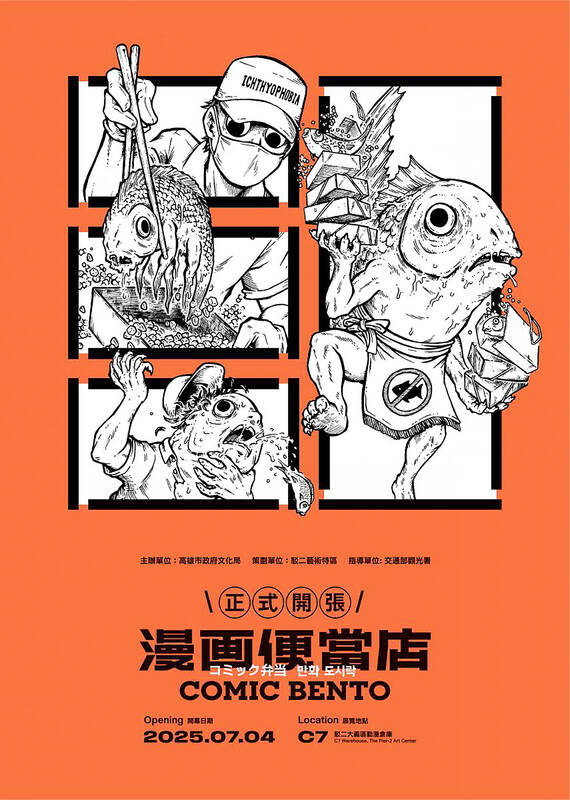
Photo courtesy of Comic Bento
Posters on the walls present each comic as a nutritional label for the stories and an ingredient chart for the characters, such as “25 percent drama,” “high romance,” and so on, mimicking calorie or sugar content.
Visitors are handed trays and tongs, inviting them to select their “soul food” — offering a humorous yet curated experience.
‘MIRROR OF WHO WE ARE’
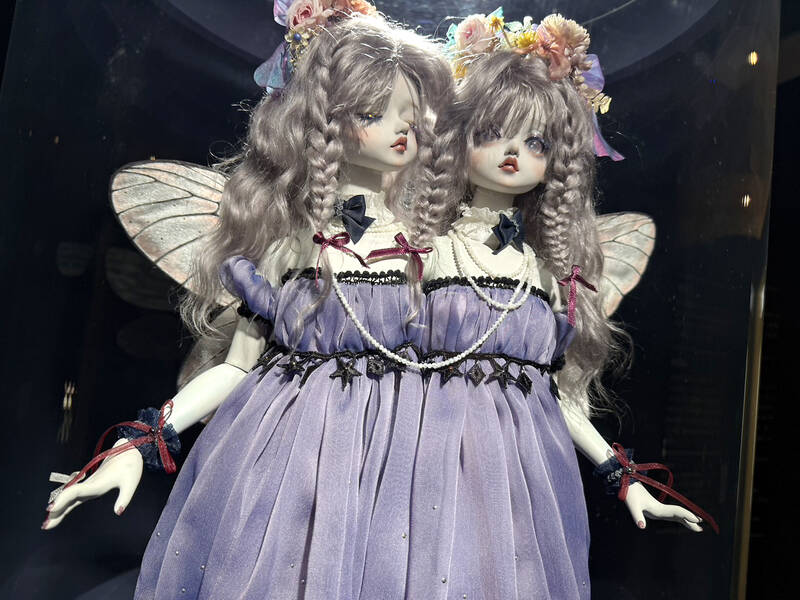
Photo: Julien Oeuillet
The curator defines Comic Bento as “a mirror of who we are, and who we hope to become.”
But beyond this lighthearted opening is an exhibition rich in emotional subtext and social commentary.
The next room, styled as a kitchen, recreates fictional dishes from Brave Animated Series, a locally produced anime. Culinary YouTuber RICO brought those fictional meals to life based on close observation of the show.
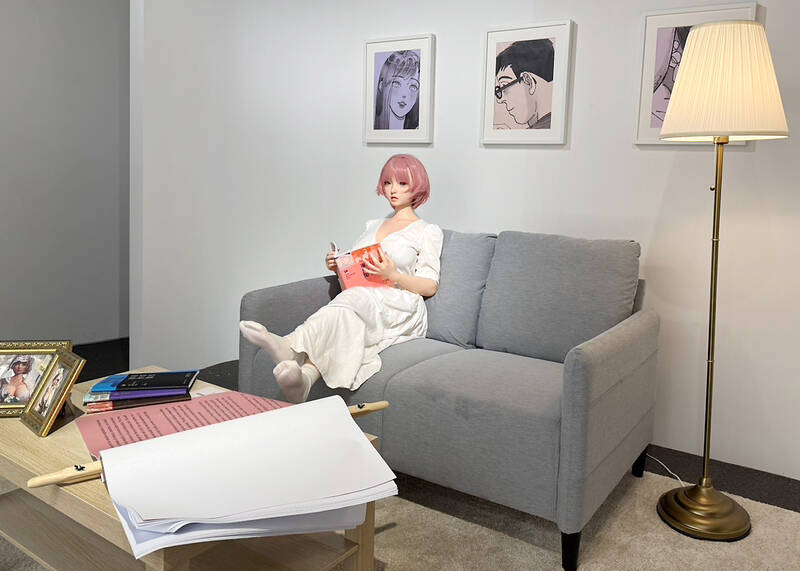
Photo: Julien Oeuillet
“After studying the original story, I tried to imagine how the food might taste based on the environment and how it’s presented in the animation,” RICO says. “The hardest part was definitely the reproduction process — especially getting the dumpling’s translucent, delicate appearance.”
HATED BENTO ITEMS
In a backroom, artist 10seconds goes in a different direction — turning Taiwan’s most hated bento items into adorable artwork and plush toys shaped like braised eggplants and tomato egg stir-fry.
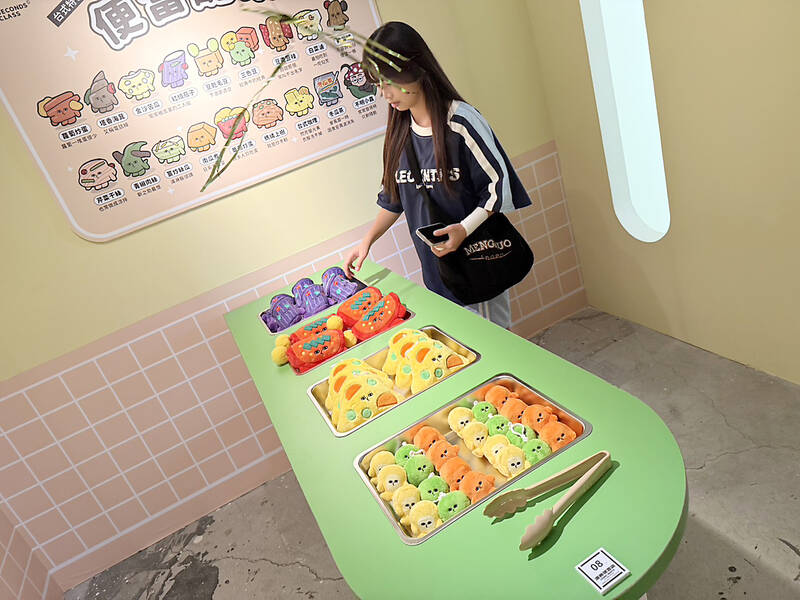
Photo: Julien Oeuillet
“When the Pier-2 Art Center reached out with the idea of a bento-themed exhibition, it reminded me of a bento side-dish illustration I had drawn years ago,” he says. “What stood out to me back then was how most of the comments weren’t about favorite dishes — but about the ones people hated.”
His installation taps into a common cultural experience.
“Ordering a bento for lunch felt like opening a blind box. If all three dishes were your favorites, it honestly felt like a lucky day. But if it was full of things you disliked, it could ruin your mood for the next hour,” he says. “It’s a quirky but very relatable part of Taiwanese culture — something a lot of people have experienced.”
.jpg)
Photo: Julien Oeuillet
Walk deeper into the back of the restaurant and the tone shifts entirely. A dark room, styled like a surreal horror fantasy, showcases gothic dolls in lolita dresses — one work features two dolls sewn together, conjoined like Siamese twins.
“They are not ‘two individuals,’ but rather two emotional facets of the same self,” says artist CapsuleSULPT. “This work emerged from a longing — for a version of myself who could stay by my side through solitude and self-doubt... To me, this exhibition is not only about serving a perfect bento box. It is about inviting everyone to lift the lid and take a peek at the simmering emotions and unfinished stories still cooking underneath.”
FEMININE PERSPECTIVE
The exhibition is full of these layered meanings: a personal and social metaphor delivered through kawaii aesthetics. Themes range from womanly solitude and food trauma to alienation and identity.
This feminine perspective continues in the work of Skyfire, whose comics — offered on the “menu” — feature wordless scenes of an office lady’s daily life.
“At the time, I was living near a business district and would often observe office ladies during their daily routines,” he says. “I realized that OLs (office ladies) were a subject rarely explored in the Japanese illustration styles I was drawn to. My goal was to create works that feel relatable if you understand the context—but still beautiful and meaningful even if you don’t.”
Several installations also highlight local craftsmanship. CapsuleSULPT collaborated with Taiwanese artisans for clothing and doll elements.
“Every step was a testament to Taiwan’s self-taught and handmade ethos,” she says.
The final room upstairs brings a jarring shift.
Styled like a cramped apartment, it contains life-sized, hyper-realistic latex dolls — the type typically associated with sex.
One lies on a surgical table; another sits on a couch, apparently reading. Pages from a comic inspired by social journalism line the walls.
The effect is uncanny, blending domestic normalcy with unsettling dehumanization.
Artist Ovumie offers a sharp reflection: “I tried placing elements like a silicone doll and a rented boyfriend into that kind of lively, family reunion setting — just to see what kind of emotional contrast or unexpected reflections might emerge.”
That sentiment captures the spirit of Comic Bento: a seemingly playful showcase that unfolds into a thoughtful dissection of modern Taiwanese life, told through the eyes of local artists.
This is food for the mind — humorous, personal, occasionally disturbing, and deeply relatable.
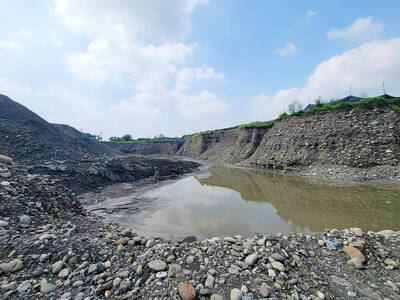
Last week the story of the giant illegal crater dug in Kaohsiung’s Meinong District (美濃) emerged into the public consciousness. The site was used for sand and gravel extraction, and then filled with construction waste. Locals referred to it sardonically as the “Meinong Grand Canyon,” according to media reports, because it was 2 hectares in length and 10 meters deep. The land involved included both state-owned and local farm land. Local media said that the site had generated NT$300 million in profits, against fines of a few million and the loss of some excavators. OFFICIAL CORRUPTION? The site had been seized
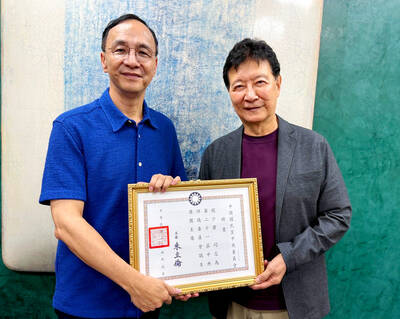
Next week, candidates will officially register to run for chair of the Chinese Nationalist Party (KMT). By the end of Friday, we will know who has registered for the Oct. 18 election. The number of declared candidates has been fluctuating daily. Some candidates registering may be disqualified, so the final list may be in flux for weeks. The list of likely candidates ranges from deep blue to deeper blue to deepest blue, bordering on red (pro-Chinese Communist Party, CCP). Unless current Chairman Eric Chu (朱立倫) can be convinced to run for re-election, the party looks likely to shift towards more hardline
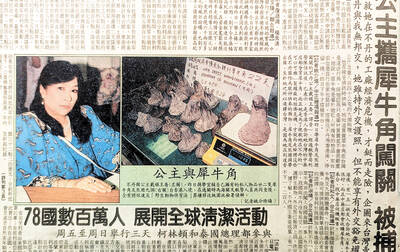
Sept. 15 to Sept. 21 A Bhutanese princess caught at Taoyuan Airport with 22 rhino horns — worth about NT$31 million today — might have been just another curious front-page story. But the Sept. 17, 1993 incident came at a sensitive moment. Taiwan, dubbed “Die-wan” by the British conservationist group Environmental Investigation Agency (EIA), was under international fire for being a major hub for rhino horn. Just 10 days earlier, US secretary of the interior Bruce Babbitt had recommended sanctions against Taiwan for its “failure to end its participation in rhinoceros horn trade.” Even though Taiwan had restricted imports since 1985 and enacted

The depressing numbers continue to pile up, like casualty lists after a lost battle. This week, after the government announced the 19th straight month of population decline, the Ministry of the Interior said that Taiwan is expected to lose 6.67 million workers in two waves of retirement over the next 15 years. According to the Ministry of Labor (MOL), Taiwan has a workforce of 11.6 million (as of July). The over-15 population was 20.244 million last year. EARLY RETIREMENT Early retirement is going to make these waves a tsunami. According to the Directorate General of Budget Accounting and Statistics (DGBAS), the